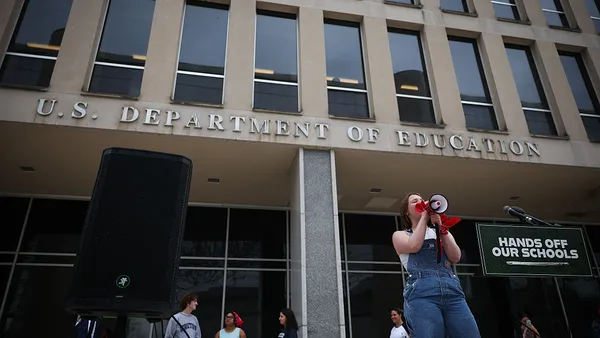On April 11, 1965, President Lyndon B. Johnson signed the Elementary and Secondary Education Act of 1965, which featured Title I as a cornerstone of Johnson’s War on Poverty.
Title I provided annual financial assistance to school districts serving students from low-income families. The provision supported equitable access to high-quality K-12 education as schools complied with desegregation orders in the wake of the U.S. Supreme Court's landmark decision in Brown v. Board of Education a decade earlier.
Sixty years later, the fight for equitable access to education continues, according to education experts and civil rights advocates.
"It's very important to remember that we're also talking about improving educational opportunities for students of color, in addition to students from low-income backgrounds," said Ivy Morgan, director of P-12 data and analytics for EdTrust, a nonprofit research and advocacy organization.
Morgan said the Title I provision in ESEA laid the groundwork for other federal policies meant to level the playing field for students, such as the Individuals with Disabilities Education Act for students with disabilities and Title III for English learners.
"ESEA and Title I were a game-changer for how we think about what it means to provide education in America and what it means to provide fair education in this country," Morgan said.
Title I, funded at $18.4 billion in fiscal year 2024, is distributed through formula grants, meaning the money is allocated based on predetermined factors such as poverty rates and student populations. The formula grant also has certain spending and reporting requirements.
Some Republican-leaning states and lawmakers currently — and over the past six decades — have lobbied to convert Title I to a block grant program, which they say gives states and districts more flexibility to use the funds as they see best.
But opponents say that could result in reduced accountability and vastly different K-12 experiences for students depending on where they live.
There are pros and cons to each approach, according to a March memo from Bellwether, a nonprofit research and advising organization. "If states do get substantial flexibility to direct both the allocation and use of funds, there is real opportunity for states to better allocate funding to benefit students and real risk that funding is diverted in ways that harm students who most need the supports these funds currently provide," the memo said.
Bellwether gave a hypothetical example of how Title I block grants would impact schools in Tennessee. The state already provides an additional 25% in funding for each low-income student enrolled and another 5% on top of that in districts where 35% or more students are low-income.
If the Title I funds were block-granted, the state might be able to decide to use Title I funding to increase the percentage of either or both of those funding weights. That could result in additional funding per low-income student or funding for districts and charter schools serving the highest concentrations of low-income students.
Although the block grant approach continues to direct additional money for low-income student populations, the formula can change the amount going to individual schools and districts. This is something state policymakers would need to consider, Bellwether said.
Here's a closer look at Title I's impact over the years:














